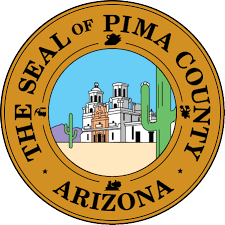Childhood vaccination rates in Arizona consistently eroded during the Ducey Administration. The conventional wisdom has been that it was because of a general decline in parental enthusiasm for vaccines. However, more and more it’s looking like it’s because of eroding access to vaccines resulting from the actions of ADHS’ Vaccines for Children program. A primer:
State law requires the ADHS to collect data about the vaccination rates for Child Care/Preschool; Kindergarten; and 6th grade. Schools submit the data to the ADHS each fall (deadline is November 15) and in the spring ADHS is required to publish the data by school. ADHS then published that data. See: Childhood Vaccination Rates Continue to Drop In the 2021-2022 School Year
The news isn’t good. Childhood vaccination rates continuously declined during the Ducey administration with the statewide immunization rate for Kindergarteners now at 91%, well below the community immunity threshold for measles of 95%.
The conventional wisdom and talking points from ADHS leadership during the Ducey era were that parental choice was driving lower childhood vaccination rates. But is that true?
No. It’s increasingly looking like the erosion of access to vaccine for lower income kids is a bigger driver of Arizona’s eroding childhood vaccination rates – making it harder for parents to get their kids vaccinated.
Evidence is emerging that vaccination rates among kids who are Medicaid members has been declining while the rates for non-Medicaid member kids has remained stable. Why would vaccination rates be declining among AHCCCS member kids but not the rest?
The decisions and operational behavior of ADHS’ Immunization Office during the Ducey Administration appears to be a big part of why rates are dropping. ADHS’ over-regulation of the Vaccines for Children program has been running doctors’ offices out of the VFC program… meaning parents of kids who are Medicaid members are having a harder and harder time finding a time and place to get their kids vaccinated, lowering overall vaccination rates.
Here’s a deeper dive into why:
Vaccines for children enrolled in Medicaid come via the U.S. Vaccines for Children Program. States distribute them to physicians’ offices & clinics that take part in the VFC program. The ADHS manages the VFC program in our state.
Doctor’s offices and clinics are required to be enrolled as a VFC provider by ADHS to take part in the Medicaid (AHCCCS) program… so, the number of providers enrolled in VFC has a direct impact on the adequacy of a state’s care network for kids enrolled in AHCCCS.
Why the decline? Anecdotally, providers who left VFC over the last few years say they quit because of the administrative hassles imposed on them by the state during the Ducey administration (ADHS not AHCCCS).
At the top of the list of grievances is ADHS’ punitive practice (during Director Christ’s tenure) of financially punishing providers with wastage rates over 5% making participation financially difficult (see this letter to AZAAP members regarding the former ADHS policy).
Arizona now only has 6 VFC providers per 10,000 Medicaid eligible kids, while the national average is 24 providers per 10,000 Medicaid kids… only 25% of the national average.
The Ducey-era ADHS never conducted an analysis to determine why so many providers have stopped participating in VFC during the Ducey administration. Thankfully, the Arizona Partnership for Immunization has been working with the OMNI Institute to figure out why so many have quit so we can right the VFC ship.
We expect the results of this landmark report to be out this summer… ideal timing for the new ADHS to conduct interventions to right the ship like:
1) Reversing Ducey administration VFC policies;
2) Changing ADHS operational procedures;
3) Making leadership changes at ADHS’ Immunization Office; and/or
4) Exploring moving VFC to AHCCCS.
Related:
- Childhood Vaccination Rates Continue to Drop In the 2021-2022 School Year
- Righting Arizona’s ‘Vaccines for Children’ Ship
- The ‘Vaccines for Children’ Program Is Critical to Maintaining Childhood Vaccination Rates… but Provider Participation Has Plummeted During the Ducey Administration

